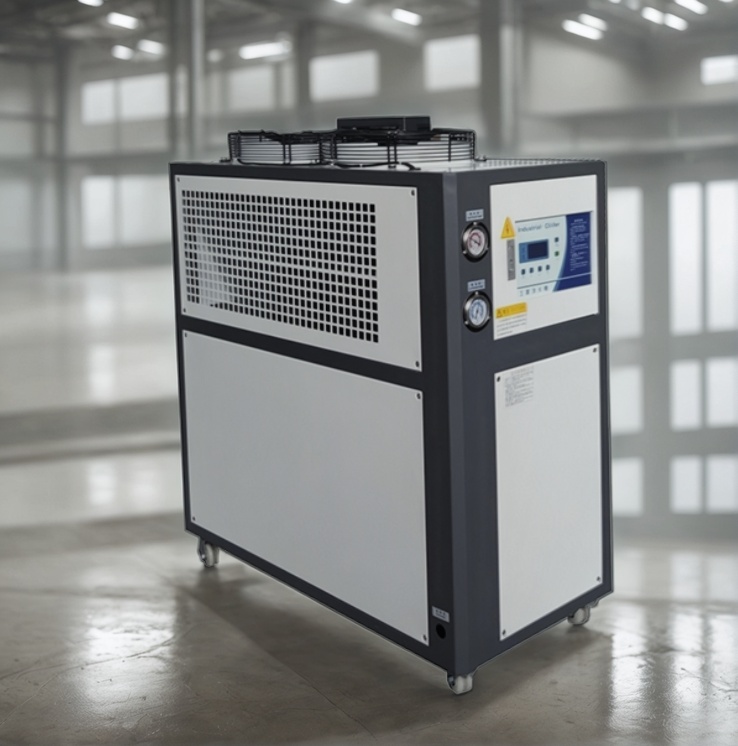In the landscape of modern manufacturing and processing, precise temperature control is not merely a preference; it is a fundamental requirement for operational success, product quality, and equipment longevity. At the heart of this thermal management lies the Industrial Chiller, a critical piece of machinery designed to remove heat from a process liquid, which is then circulated through heat-exchanging equipment. The stability these systems provide is indispensable across a vast spectrum of applications, ensuring that processes run smoothly and efficiently, preventing costly downtime and material defects caused by overheating.

The market offers various types of chillers, but one of the most efficient and powerful options is the water cooled chiller. Unlike its air-cooled counterpart, which uses ambient air to dissipate heat, a water cooled chiller utilizes a secondary water source, typically from a cooling tower, to reject heat from the refrigerant. This design offers significant advantages, particularly in terms of efficiency and performance consistency. They are less affected by fluctuating ambient air temperatures, making them ideal for indoor installations or in regions with high heat. Furthermore, they often have a longer lifespan and quieter operation, contributing to a more stable and pleasant working environment. The initial investment might be higher due to the need for a cooling tower and pump system, but the long-term energy savings and reliability often result in a lower total cost of ownership for large-scale industrial operations.
When evaluating a modern industrial cooling solution, several key features distinguish a high-quality unit from the rest. The physical design, for instance, should balance robustness with functionality. A durable casing with sleek, easily removable panels is a sign of thoughtful engineering, providing both protection for internal components and straightforward access for maintenance. Performance monitoring is paramount, with features like prominent dual pressure gauges on the control panel allowing operators to assess system health and efficiency at a glance. The user interface is another critical aspect; a clear digital control panel with intuitive navigation and diagnostic indicators demystifies operation and empowers users to make precise adjustments, optimizing uptime and preventing guesswork during troubleshooting. Furthermore, details like high-efficiency ventilation panels for heat dissipation and sturdy caster wheels for mobility underscore a design built for both performance and practical use in dynamic industrial settings. Any superior water cooled chiller will also prioritize safety, incorporating clear warning labels and certified components to protect both equipment and personnel.
The versatility of an Industrial Chiller is showcased by its wide range of applications. In the plastics industry, for example, chillers are used to cool the hot plastic that is injected, blown, or extruded, ensuring part integrity and faster cycle times. The laser industry relies heavily on chillers to remove excess heat from laser sources and power supplies, maintaining the precise wavelength and beam quality required for cutting, welding, and engraving. In the medical field, they are essential for cooling MRI magnets and other diagnostic equipment. When searching for industrial chillers for sale, it is crucial to match the unit’s capabilities to the specific demands of these applications. The food and beverage sector uses them to cool ingredients and control fermentation processes, while chemical manufacturing requires precise temperature regulation for safe and consistent reactions. This broad utility makes them a cornerstone technology for modern production.
For businesses actively looking at industrial chillers for sale, making the right choice requires careful consideration of several factors beyond the initial price. The most important specification is the cooling capacity, typically measured in tons or kilowatts, which must be accurately calculated to meet the process heat load. Undersizing a chiller will lead to inadequate cooling, while oversizing results in unnecessary energy consumption and capital expenditure. Energy efficiency, often expressed as an Energy Efficiency Ratio (EER), is another vital metric. A higher EER indicates lower operating costs over the unit’s lifetime. Prospective buyers should also evaluate the chiller’s physical footprint, noise level, and the required maintenance schedule to ensure it aligns with their facility’s constraints and operational workflow. Investing time in this evaluation process ensures the selection of a chiller that delivers reliable performance and a strong return on investment.
A high-quality water cooled chiller is more than just a piece of equipment; it is an investment in the core productivity and stability of your entire operation. The consistency it provides directly translates into improved product quality, with fewer defects and less material waste. By effectively protecting sensitive machinery from the damaging effects of overheating, it significantly reduces the risk of unexpected equipment failure and costly downtime, thereby extending the service life of valuable assets. The enhanced energy efficiency of modern units also leads to substantial savings on utility bills, contributing to a more sustainable and profitable business model. Ultimately, integrating a dependable cooling solution fosters a safer, more predictable, and more efficient production environment.
In conclusion, the role of the Industrial Chiller in today’s industries cannot be overstated. From its core function of providing stable process temperatures to the specific advantages offered by different designs, it is a key enabler of quality and efficiency. By understanding the operational principles, recognizing essential design features, and carefully evaluating the needs of a specific application, a business can select a cooling system that will serve as a reliable foundation for success for years to come.



评价
Clear filters目前还没有评价